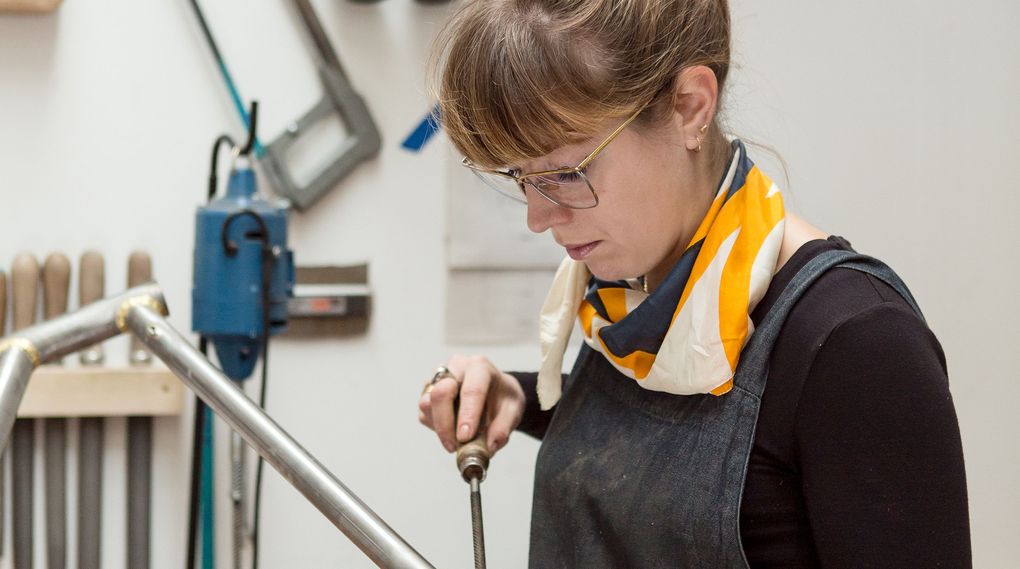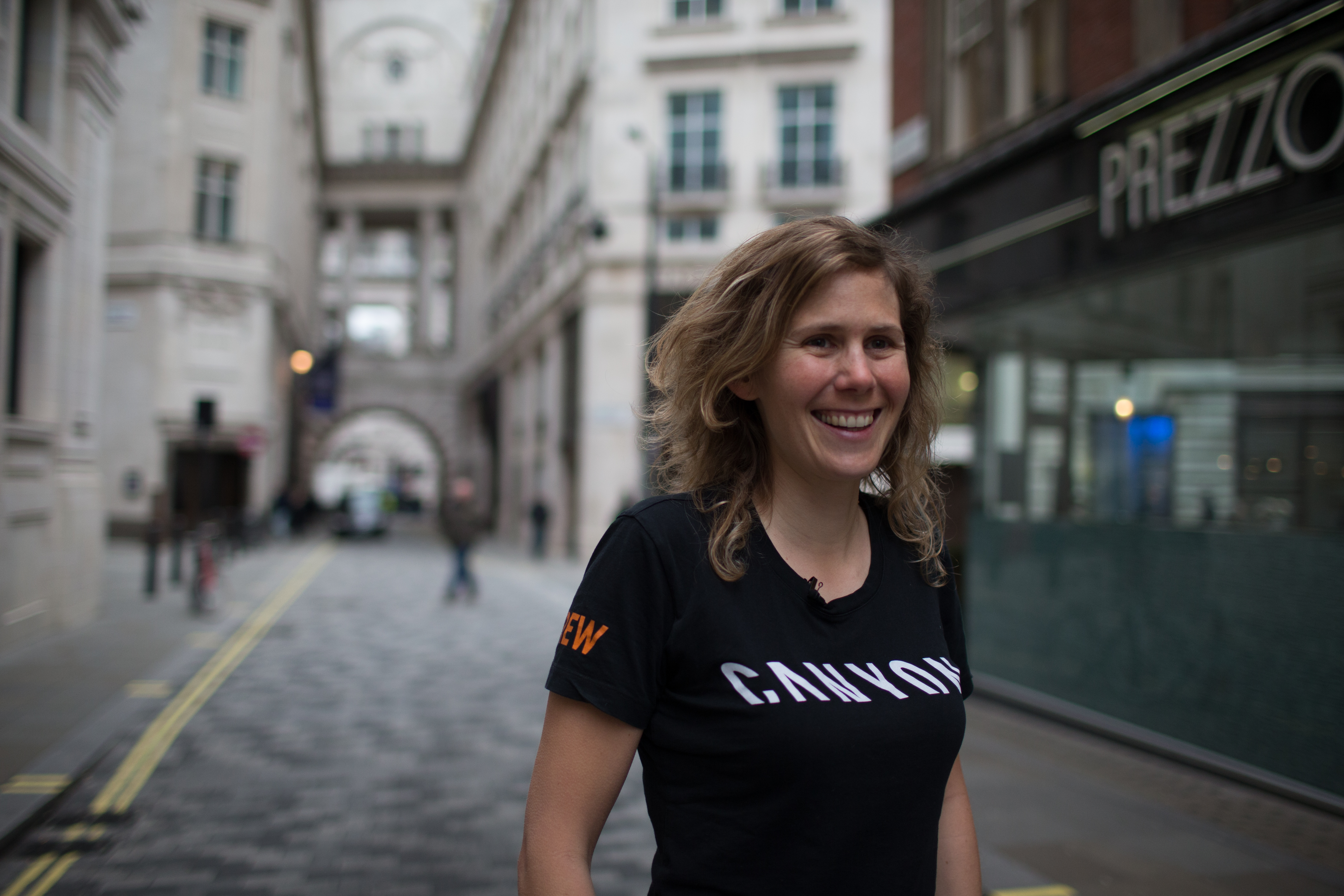Frame builder Caren Hartley has experienced impressive success from building her first bespoke bike less than three years ago to featuring one of her machines at the Design Museum alongside the icons of bicycle innovation.
Hartley chats to Laura Laker about her meteoric rise as the UK’s first modern day female bike builder, why she believes we don’t need women-specific bikes and how off the peg frames may be in the pipeline for Hartley Cycles.

Caren and I met waiting at some traffic lights near Monument Station in the pouring rain in early 2014, we shared a moment, laughing as water poured off our noses. We met, coincidentally, again that summer, 26 miles into the Dunwich Dynamo in the loos of a pub. It’s amazing to think she was only building her second bike then, the Pocket Rocket she now rides.
Hartley’s personality is a great combination of a sunny outlook combined with quiet – I want to say steely – determination, traits that are perhaps reflected in her gorgeous machines. Coming from a fine art background in metalwork and sculpture Hartley’s route into the bespoke bike world was unconventional, but it perhaps meant her now easily-recognisable style was quickly established: the deep blues and art deco inspired red and yellow details with silver highlights (that’s real silver, folks) that have turned so many heads.
Needless to say she didn’t expect to be so successful so soon. So what has drawn people to her bikes?
“No idea, I hadn’t expected it to happen this quickly!”
Go on, you’ve got an idea.
“Without maybe realising it, I’m ridiculously picky”
“Probably the finish, maybe the silver details, I really take a lot of time over the way they look, but I don’t want that to be at the expense of the function so I kind of see both of those things as equal. I feel it needs to perform really well, that’s obviously its primary function, but if it doesn’t look nice then I’m less interested, so I spend lots of time tweaking bits here and there until I’m happy.”
Hartley feels it’s her art school, design background “where you literally spend years and years of your life looking at things, saying ‘why do I like that? What is it that I like?’ and so I kind of apply that to the way I work as well”, she says.
“Without maybe realising it, I’m ridiculously picky: that angle’s wrong, why? I don’t know, it just is and there’s not always a reason why and I’ll just keep working on it.”










